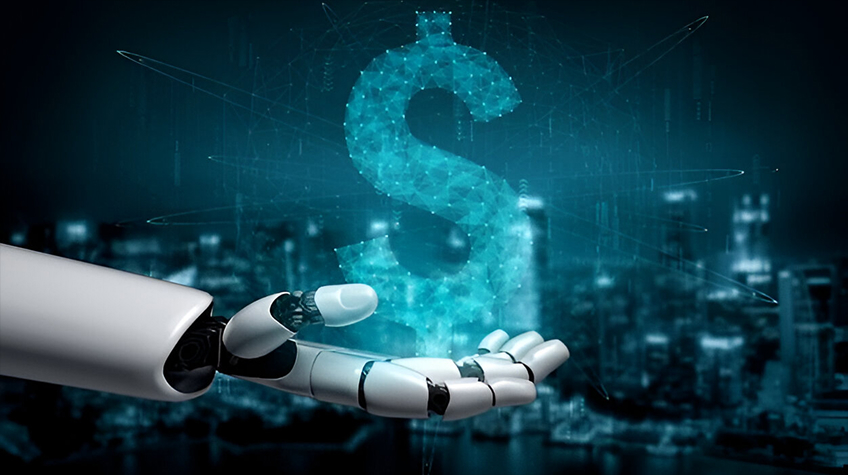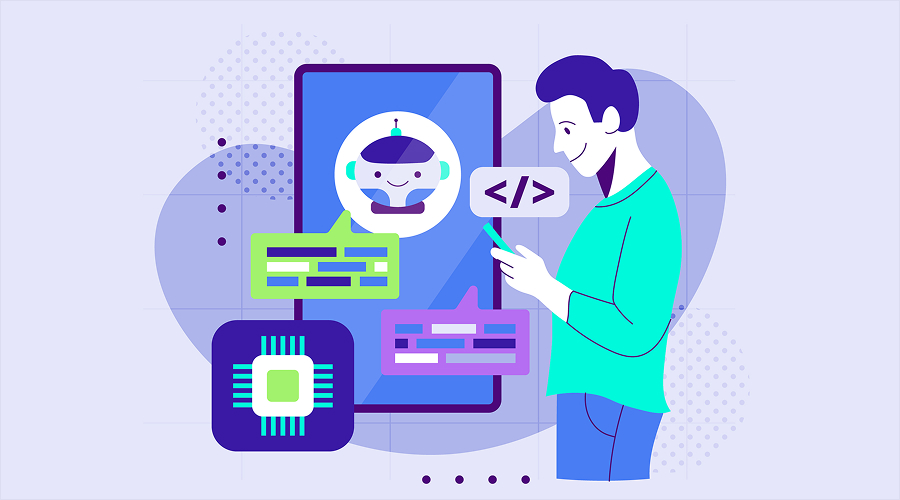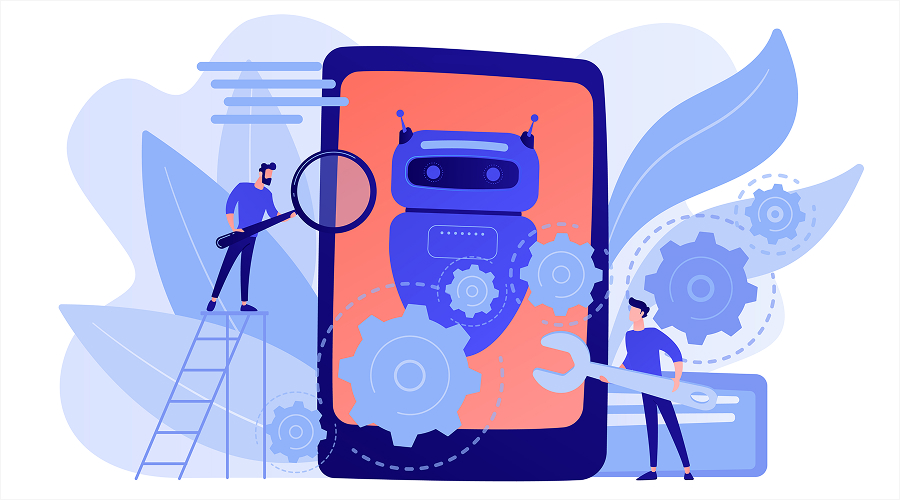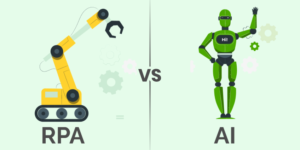
The development cost of an AI app depends on the complexity, features, platforms, and the development teams. It is good to be aware of the pricing model when planning a budget. Be it developing a chatbot, a recommendation engine, or an intelligent AI-powered automation. This guide details the average price, factors that affect the average cost, and tips for spending money efficiently.
The impact of artificial intelligence (AI) is changing how we relate to technology. Apps powered by AI are changing business in every possible way, from personal assistants like Siri to intelligent chatbots in customer service. AI-enabled applications are changing businesses into being smarter and more speedy. However, if you are planning to develop an artificial intelligence app, the first question that comes to mind is how much it is going to cost.
The development cost of AI applications varies with different factors, such as the type of AI, the volume of data required, the duration, and the location of the development team. It is important to know what the pricing entails, whether you require a basic AI chat solution or a full-fledged machine learning solution.
Average Cost of AI App Development
| AI App Type | Complexity Level | Development Time | Estimated Cost Range (USD) |
| Basic AI Chatbot or Virtual Assistant | Low | 1-2 months | $10,000 – $30,000 |
| Predictive Analytics App | Moderate | 2–4 months | $30,000 – $60,000 |
| AI-based Recommendation Engine | Moderate–High | 3–5 months | $50,000 – $120,000 |
| AI Voice Assistant (Speech-to-Text) | High | 4–6 months | $80,000 – $150,000 |
| Computer Vision App (e.g., face/image recognition) | High | 4–7 months | $100,000 – $200,000 |
| Deep Learning App (e.g., real-time NLP or self-learning systems) | Very High | 6–12+ months | $150,000 – $300,000+ |
Common Types of AI Apps
1. Basic AI Apps
Basic AI applications are simple chatterbots, recommender systems, or auto-reply applications. These chatbots operate both with a pre-trained model and rule-based logic and can be applied to FAQs, reminders, or product recommendations. As an example, one of the simplest AI applications is the confirmation of the food delivery chatbot, taking an order or mentioning the menu items. Such apps do not require much information to process and can be developed on any platform, including Dialogflow or ChatGPT APIs.
Although not advanced, basic AI applications improve user experience and replace human tasks, without substantial investments in the field of model training and creating certain infrastructures.
2. Average (Moderately Complex) AI Apps
Medium-sophisticated AI is the combination of features, like machine learning, sentiment analysis, or real-time predictions. Data, model training, and testing will be necessary in these apps. One of the most typical examples is the AI-assisted financial tracker, where the AI can be used to determine how much the user would spend based on their past experiences and trends. The other one is a customizable e-learning platform where the content is adapted according to the performance of a student.
These programs provide feedback that changes with time and develops together with user habits. They demand more back-end support, a bigger dataset, and connections to other APIs. Businesses that require a competitive advantage tend to adopt this degree of complication to provide personalised experiences and more intelligent services.
3. Complex AI Apps
Complex AI apps have elaborate processes, like deep learning, natural language processing (NLP), computer vision, or real-time information processing. The applications can carry out human-like activities, such as face recognition, translation, medical diagnosis, or self-driving aids. As an example, a healthcare app providing MRI scans analysis based on computer vision or a legal assistant solving legal texts and proposing the steps.
The applications require the development of bespoke models, high-powered cloud networks, and continuous training on large data sets. These suit best businesses and technology-intensive startups that address life-changing issues with AI.
Key Factors That Affect AI App Development Cost

1. Type of AI Technology
Development cost is greatly influenced by the type of AI implemented, e.g., machine learning, natural language processing, computer vision, etc. Simple rule-based systems are less expensive, whereas custom-trained models need time and expertise. For example, an AI chatbot is cheaper in comparison with a facial recognition app. Complicated AI requires more data, infrastructure, and time to develop, increasing the overall budget as the technology becomes more sophisticated.
2. App Complexity and Features
The more complex your app is, the higher it will cost. Functions, such as real-time analytics, personalization, voice-based control, and AI-based feedback, also increase the development time. A simple chatbot may be developed within weeks, and a particularized recommendation engine may require months. It also depends on the number of screens, user roles, and in-app logic. Each additional feature and functionality comes with testing, integration, and optimization.
3. Data Requirements and Processing
AI applications require high-quality data in order to train and operate. When you possess structured data, the expenses are under control. However, gathering, cleaning, and labeling the raw data may tend to become costly and time-consuming. In other situations, companies have to spend money to buy third-party data or resort to synthetic data. The ongoing data input, storage, and processing also contribute to infrastructure and cloud costs, particularly for apps that have a real-time learning need or predictive functions.
4. Team Location and Expertise
The location of your development team plays an important role in overall expenditure. The cost of employing developers in the US, the UK, or even in Eastern Europe will be high as compared to working with talent in India. Moreover, experienced AI creators, data scientists, and ML engineers are expensive because they have specialized abilities. Budget can be managed by selecting an in-house development team or outsourcing to an experienced AI app development company.
5. Timeframe for Delivery
The shorter delivery schedules often entail additional resources that are bound to raise your total budget. Compact schedules mean an increased number of people in the team, longer work hours, and the possibility of fewer opportunities to test the models carefully or improve the design. Long development plans, on the other hand, enable effective planning as well as good distribution of resources.
Practical Tips For Efficient Spending On AI App Development

1. Start with an MVP (Minimum Viable Product)
It is best to develop a basic version of the app instead of doing all of it at once. This helps get feedback on the validity of your idea, user feedback, and reduces risk. Over time, you can have the ability to scale the app based on the real user and performance needs.
2. Use Pre-Trained AI Models
It is costly to develop AI models from scratch. Rather, apply a pre-trained model in platforms such as OpenAI, Google Cloud AI, or Microsoft Azure. Such services have stable APIs, covering text, speech, vision, predictions, and all at a much cheaper price than tailor-made solutions.
Choose the Right Mobile App Development Company
By collaborating with a trusted mobile app development company, it is possible to plan and implement better architecture and reduce rework. They come with domain expertise, reusable code libraries, and proven workflows, thus saving costs and time as well.
1. Leverage Open-Source Frameworks
Cut the licensing cost by implementing open-source AI frameworks such as TensorFlow, PyTorch, and Scikit-learn. It is heavily utilized, highly documented, and supported by varied developer communities, though it is quite flexible, and there are no additional costs to effectively use it.
2. Prioritize Features Based on ROI
Write down each feature that you desire and prioritize it. Start with low-cost and high-value capability. This eliminates overbuilding and makes sure that you do not waste your money on features that have no short-term payoff or customer gratification.
3. Outsource Non-Core Tasks
Rather than hire an entire in-house team to complete each job, outsource some of the parts of the work, like the UI design, annotating data, or the backend integration. This eliminates overhead and gives your core staff time to focus on the high-level work
4. Invest in Testing and Feedback Loops
Effective testing minimizes post-launch fixes, which are mostly costlier. In addition, you can add feedback loops to your app, making the AI smarter over time, eliminating manual adjustments and retraining business costs in the future.
5. Plan for Maintenance Early
Maintenance isn’t just a post-launch task; it influences the whole lifecycle. Plan 15-25% of the development expense on updates, bug fixes, and model enhancements. This will help avoid future emergencies, which would be expensive.
Conclusion
The cost of developing an AI app will depend on the use of the app, the tech stack of the app, the functions it has, and the development team. Though the prices usually fall between $10,000 and $300,000+, being aware of the factors will allow you to plan your budget rationally. Begin with a defined scope, get good developers, and do not forget about recurring costs.






